In this first part of our guide, we will focus on the two competitive scenarios and the arenas taken from the first Super Smash Bros. for N64
With a few months of delay, we have finally finalized the appendix to ours guide that we promised you, to close the circle with the arene they scenarios from Super Smash Bros. Ultimate. The game has over a hundred locations in which to give it a damn, and that is why we have calculated in advance how many extra bets to dedicate to the game. This will be the first of twelve appointments, with which we will keep you company for the next few weeks. Since at this point you will already know how to use the various characters, the final section of each episode will be dedicated to the competitive corner. Today we will talk about walk-off.
Preamble of the Appendix
Here’s what to expect from the Super Smash Bros. Ultimate arena and scenario guide. In each of these twelve events, we will talk about each scenario, its origins, who are the fighters who play at home and, in the case of the DLC, also the availability. No scenario, except for the aforementioned downloadable content, needs to be unlocked: everything is available right from the start of the game. Ironically, you may need to unlock historically associated characters at certain levels, but there is a guide for that too. Furthermore, as for the wrestlers, here too the images precede their respective section. Are you ready?
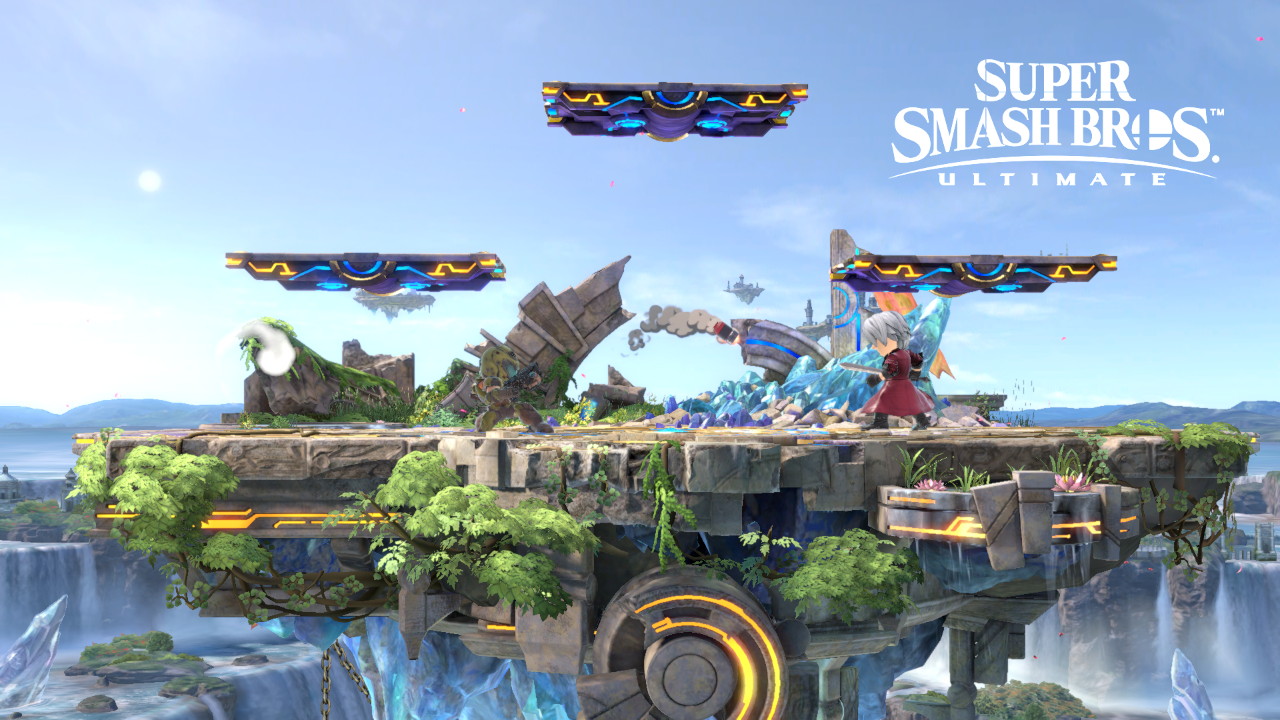
The Ruins (normal, XL, XS) – advanced guide to Super Smash Bros. Ultimate arenas and scenarios
Among the most popular arenas of the competitive scene, what will be one of the simplest scenarios of this guide cannot be missing: The Ruins, first level shown for Super Smash Bros. Ultimate. Like its counterparts (and not, see Duel Zone from the first chapter), also in this case it is a single platform accompanied by three smaller ones. Due to its simplicity, it is one of the very few legal scenarios in tournaments. Over the years, the arena has included more and more background details, transforming it into a real battlefield (hence the English name Battlefield). There is also a version XS and a version XL: the first reduces the small platforms to two, the other increases them to have six.
- Origin: serie Super Smash Bros.
- Stage representative of: no one in particular
- History: There is no real story, but it can be assumed that it is the result of an unprecedented clash in that jumble of videogame worlds that is the story mode, The Star of Hope. In this sense, it is heavily implied in Brawl that the third version of The Ruins was born following the destruction of the Great Labyrinth by Tabuu.
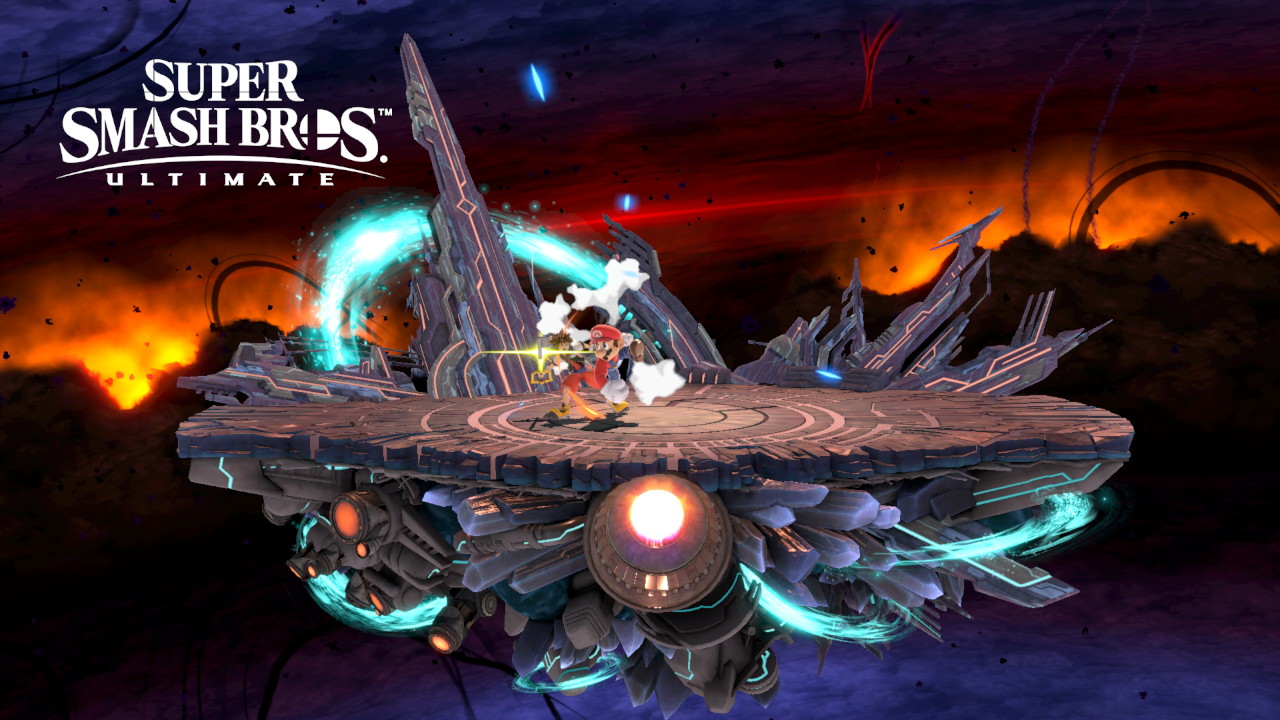
Final Destination – advanced guide to Super Smash Bros. Ultimate arenas and scenarios
“No tools! Only Fox! Final destination! ”, This is Melee’s competitive scene summed up in six words. Okay, that’s not quite the case, but we haven’t even gotten far. It is a single flat platform, and together with The Ruins, in Ultimate it extends its layout to all other levels. By pressing X on the level selection screen it is possible to alternate between the normal arena, the counterpart “The Ruins” (one large platform and three small ones) and the version Ω (one large platform). In Classic Mode, this is usually where Master Hand, Crazy Hand and / or Giga Bowser face off. In the competitive scene, needless to say, it’s legal.
- Origin: serie Super Smash Bros.
- Stage representative of: none in particular (technically, Master Hand)
- History: Sticking to the always shaky canonicity of the series, if Master Hand is the hand of a child intent on playing with his Nintendo action figures (first chapter) it is possible that Final Destination must represent the simple surface of a table. Take it with a grain of salt, though.
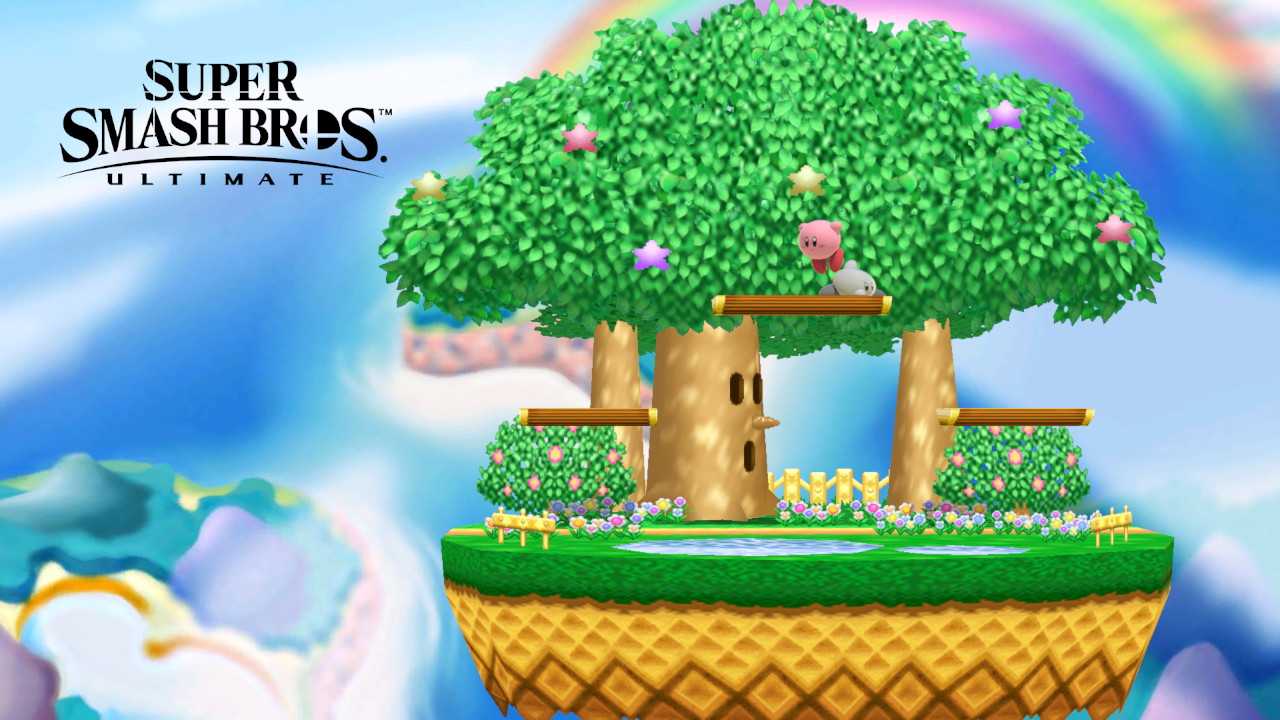
Dream Land (64) – Super Smash Bros. Ultimate arena and scenario advanced guide
The first thematic arena of the series, as well as part of the (almost) totality of environments that make their return from the very first Smash. What about Dream Land (64)? This is an arena with an almost identical layout to that of Le Rovine, with the exception of Whispy Woods in the background. Its gusts of wind can be annoying, but by deactivating the dangers (or choosing the variant Le Ruine) you get an arena functionally identical to the first we described.
- Origin: serie Kirby (riconducibile a Kirby’s Dream Land su Game Boy o a Kirby’s Adventure su NES)
- Stage representative of: Kirby
- History: The main track (by default), Gourmet Race (64), is a rearrangement of the theme of the same name from The Gourmet Race from Kirby’s Fun Pak (better known elsewhere as Kirby Super Star). The arena is based on Whispy Woods, literally “whistling grove”, which usually always appears as the first boss in the various chapters of the saga. When it doesn’t, it still features either spiritual heirs (Kirby and the Maze of Mirrors, Kirby Triple Deluxe, Kirby and the Lost Land) or corrupted versions (Kirby Planet Robobot). King Dedede appears in the background when he is not taking part in battles in this scenario.
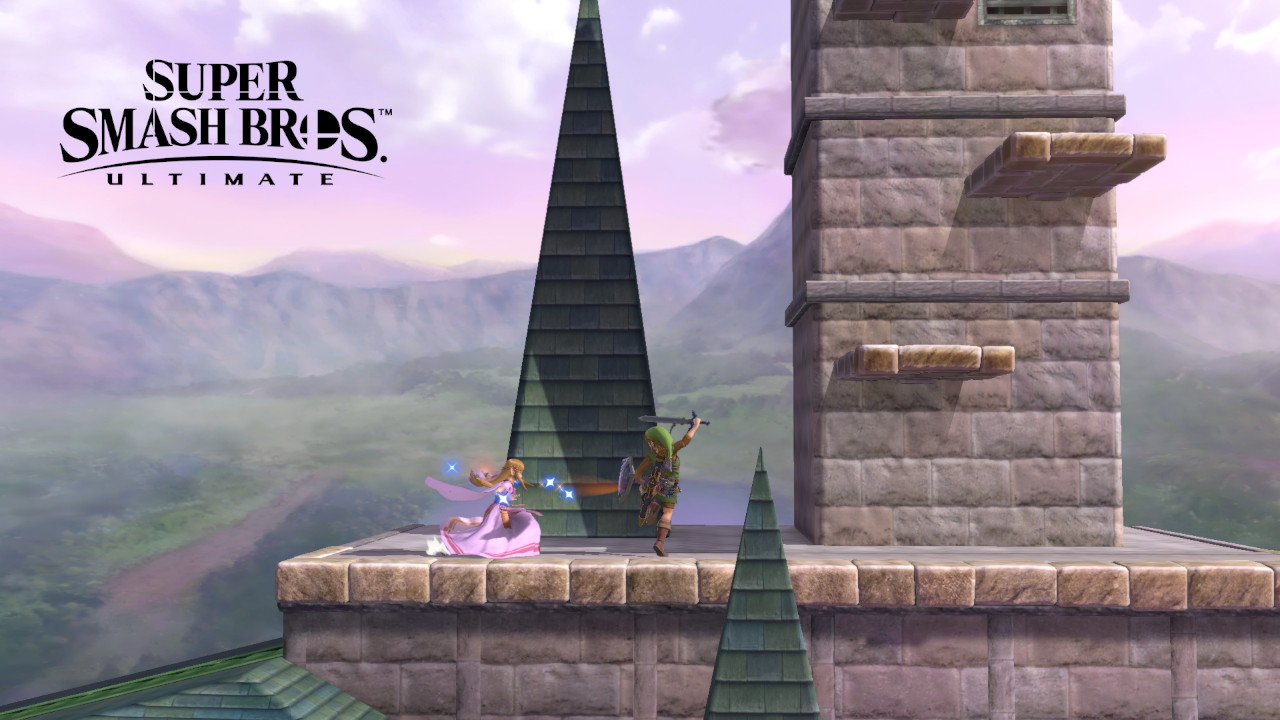
Hyrule Castle – advanced guide to Super Smash Bros. Ultimate arenas and scenarios
A slightly larger arena, this one, but still very standard in its conformation. The first scenario of the Classic mode (“1P Game”) of the first Smash, the Hyrule Castle, consists of a wall, a tower with a few balconies to act as a platform and a turret in which to chain repetitive attacks. Occasionally, a tornado will appear to knock the fighters away.
- Origin: The Legend of Zelda: Ocarina of Time
- Stage representative of: Link (mostly odd costumes), Link Child, Ganondorf
- History: Even in the textures, the castle follows its Ocarina of Time counterpart, whose Zelda (a design seen only in Melee, but remained in the series via Kirby’s cap) confided to a young Link his suspicions about Ganondorf’s future betrayal. The top of the castle has never been visited in the original game, while its post-apocalyptic counterpart (Ganon Castle) was the scene of the final battle that divided the timeline of the Zeldian saga in three.
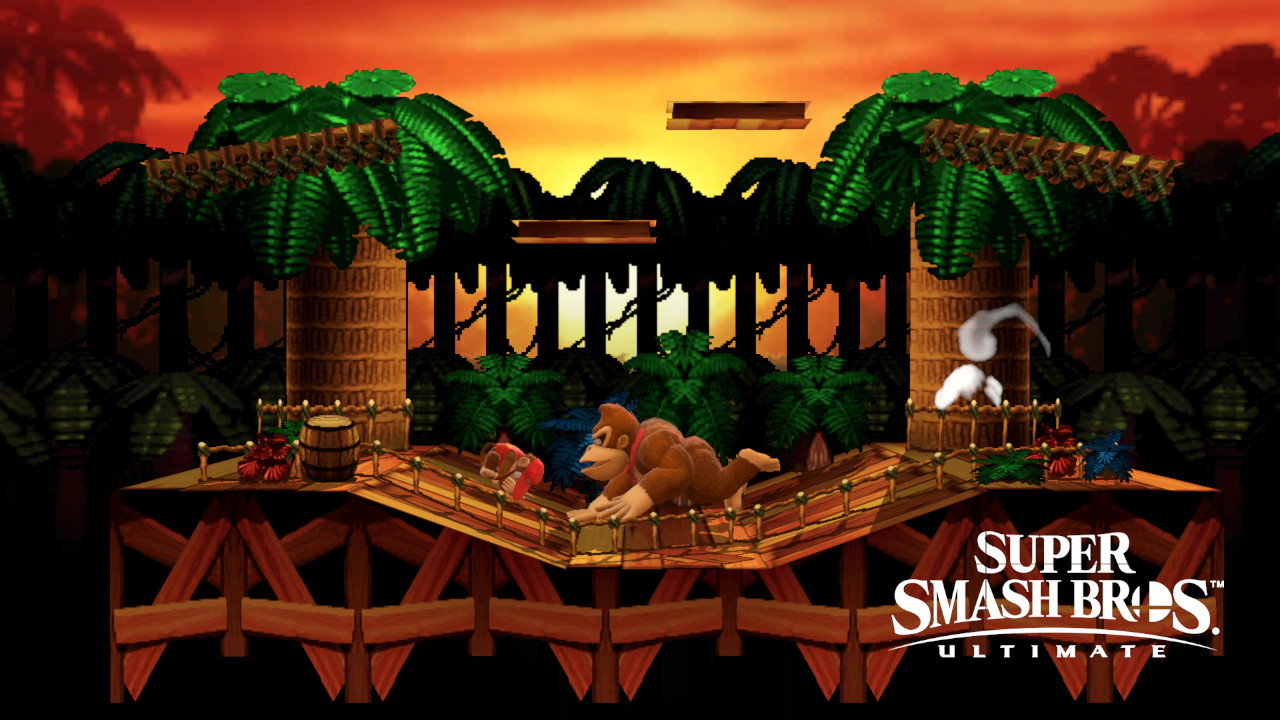
Kongo Jungle – advanced guide to Super Smash Bros. Ultimate arenas and scenarios
Another simple arena. There Giungla of the Congo it consists of a main concave platform with others, smaller, on top. The barrel-cannon poking back and forth under the ground can prove to be a lifesaver for returning to the field, if the player is lucky enough to stumble upon it while in flight.
- Origin: Donkey Kong Country
- Stage representative of: Donkey Kong, Diddy Kong
- History: The aesthetic of the level traces the eponymous first world of Donkey Kong’s solo debut, in the first Donkey Kong Country in 1994. The first level, in particular, showed a spectacular (for the time, but not limited to) transition from afternoon to sunset, until the evening. The iconic tune composed by David Wise for Jungle Hijinks (from us Giungla Gincana) was traced in Smash and accompanied the reveal of Donkey Kong Country Returns in E3 of 2010.
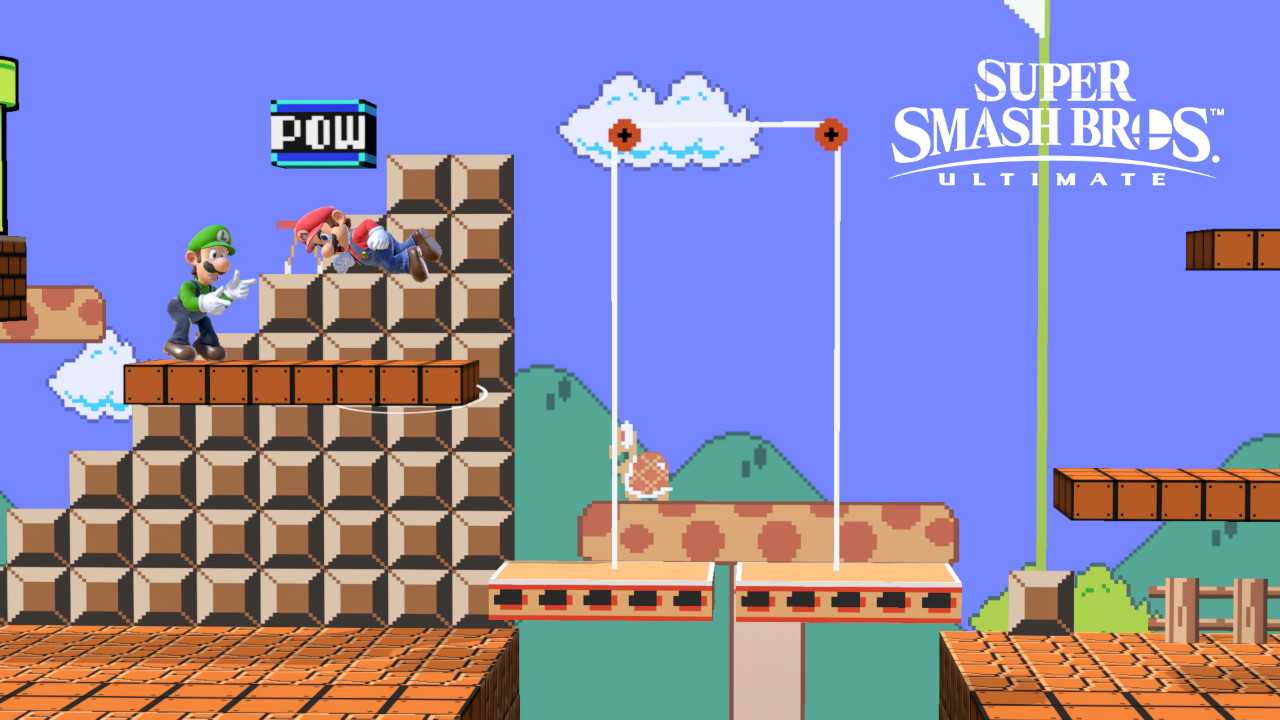
Mushroom Kingdom (64) – Super Smash Bros. Ultimate arena and scenario advanced guide
If the arenas in the first row of the scenario selection screen seem retro to you, try a level that opted for the retro aesthetic in the first game. The Kingdom of Mushrooms is a real love letter to the first Super Mario Bros., and as such it presents many obstacles from that same game. This is the first arena in the game to feature the walk-off, or the possibility of ending up outside the scenario even without finding yourself in mid-air. In tournaments, any arena that features a walk-off is banned by default.
- Origin: Super Mario Bros.
- Stage representative of: Mario, Luigi, Bowser, Peach, Piranha Plant
- History: The arena doesn’t hark back to one area of Super Mario Bros. in particular, opting instead for a global look at Mario’s first side-scrolling adventure. Specifically, here are the platforms with pulleys, a POW borrowed from Mario Bros. (which we will talk about in a few episodes), cubes containing objects, tubes that allow teleportation (Piranha Plants not playable permitting) and, on the background, the mini-castle at the end of the level.
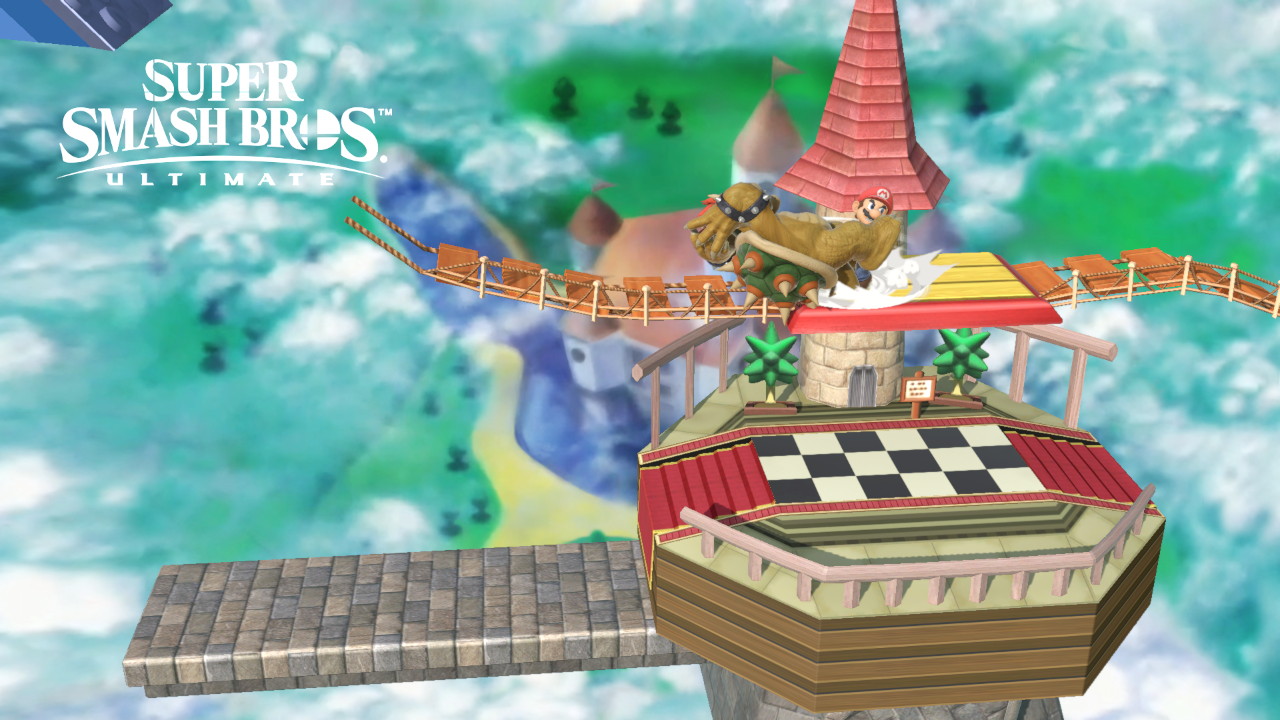
Peach’s Castle (64) – Super Smash Bros. Ultimate arena and scenario advanced guide
In the first Smash the Mushroom Kingdom had to be unlocked, while (similar to a concert lineup) the first scenario available to represent Mario’s then most recent adventure was the Peach Castle. The arena features a main deck, a bumper on top, two slippery triangles on the sides, and a drawbridge underneath everything else. The concept is similar to that of the Kongo Jungle with the cannon, but perhaps in a more accessible way.
- Origin: Super Mario 64
- Stage representative of: Mario, Peach, Bowser
- History: “A doll’s house”. The never-too-praised Nintendo The Official Magazine has thus defined Peach’s castle, and we cannot blame its editors. The game took Mario into the third dimension, but it also gave a canonical home for the first time to the princess of the Mushroom Kingdom, trapped within the walls of the plumber’s headquarters for one of his best adventures.
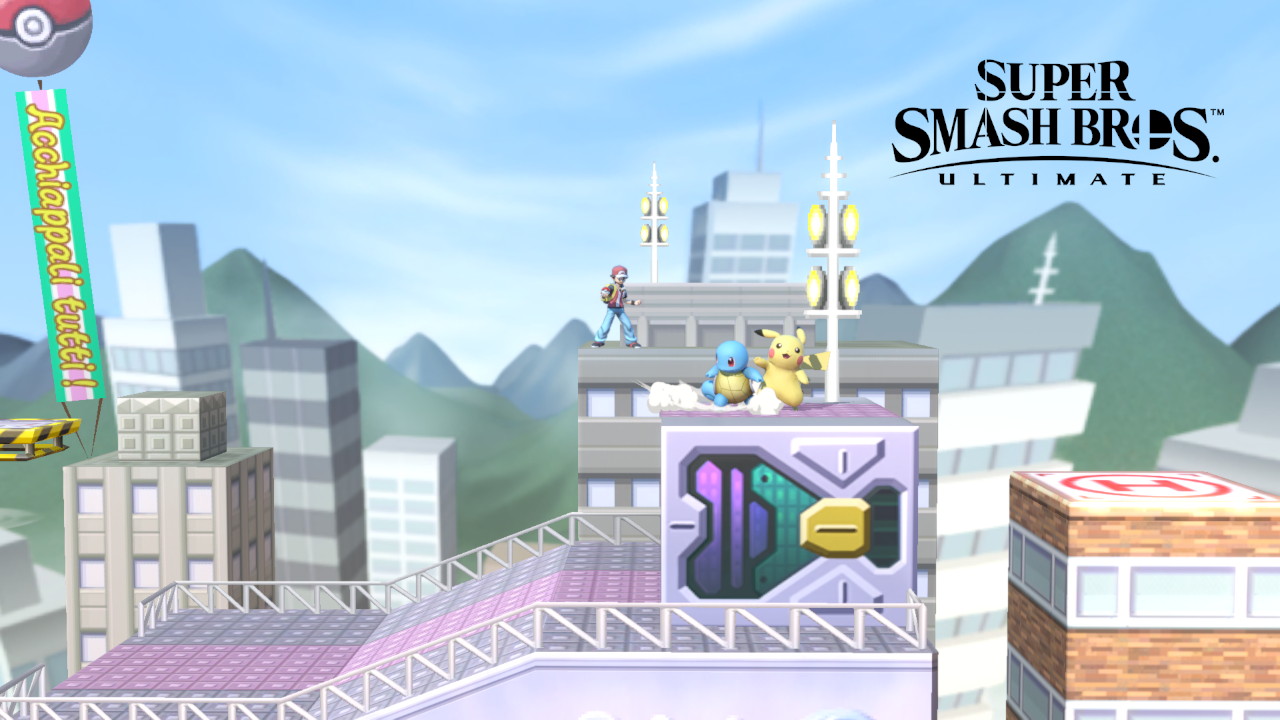
Saffron City – advanced guide to Super Smash Bros. Ultimate arenas and scenarios
At a time when Pokémania was still young, Masahiro Sakurai wanted to opt for the anime as the main influence behind the franchise’s first Pokémon arena. Saffron City it offers a very spartan layout: two static platforms on the sides, one moving vertically, and the roof of Silph SpA to act as a theater for the clashes. However, the inevitable elevator hosts an unpleasant surprise for those who hang out at the exit: a random Pokémon, ready to contribute to the defeat of the victim.
- Origin: Pokemon Red Version and Pokemon Blue Version
- Stage representative of: Pikachu, Jigglypuff, Pichu, Mewtwo
- History: As we explained when talking about Pokémon regions and their inspiration in the real world, Saffron City is the fictional counterpart of Tokyo as the nerve center of its home region. Silph SpA started a long line of big fictional companies, such as Devon of Hoenn and PokéKron SpA of Sinnoh. Curiously, in reality it is the commercial center of the nearby Celadropolis that boasts a roof (one accessible, of course), and not the “megacity” of Saffron City.

Big Tree of Happiness – Super Smash Bros. Ultimate arena and scenario advanced guide
Originally called Yoshi’s Island, this arena harks back to the Nintendo 64 semi-sequel Yoshi’s Story. Only Brawl, as we will discover in a few episodes, would have created a true arena dedicated to the classic for the NES. The Big Tree of Happiness follows the layout of Le Ruine, but enlarging and tilting the platforms at the top. The generous distance from the edges is due to the sporadic appearance of clouds that can act as temporary platforms.
- Origin: Yoshi’s Story
- Internship representative of: Yoshi
- History: Actually, the animated book aspect of Yoshi’s game world …






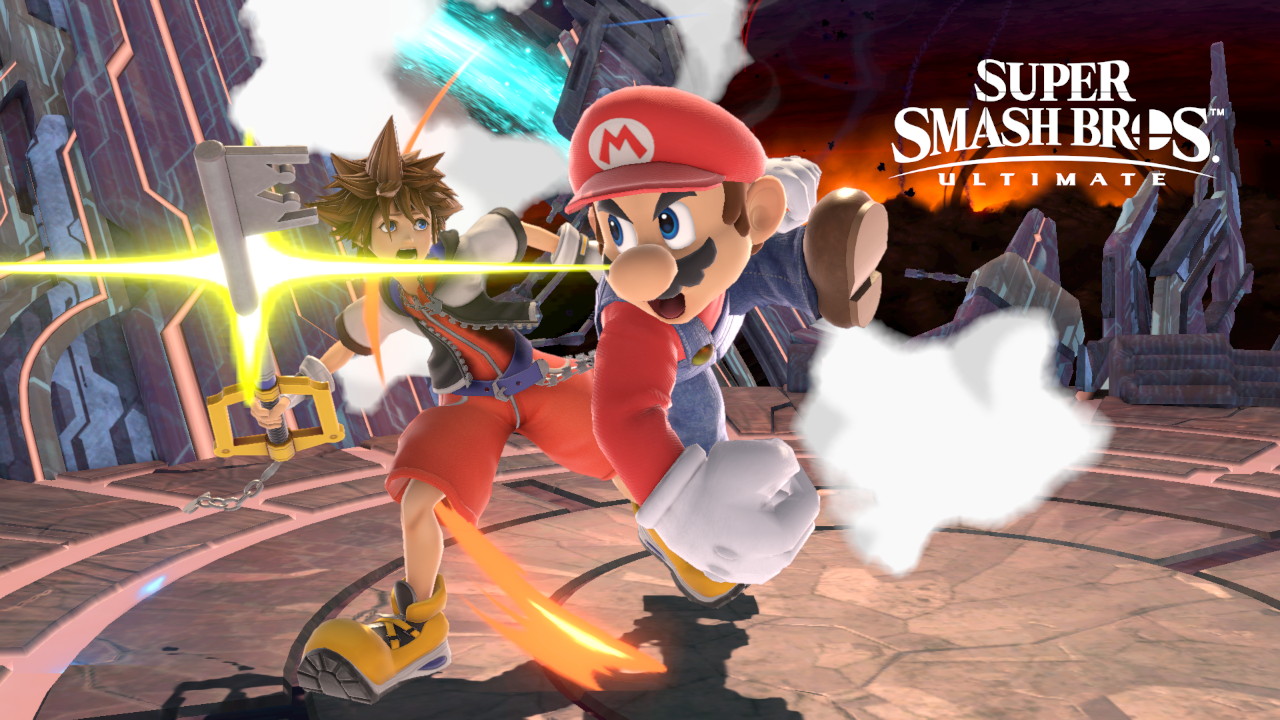





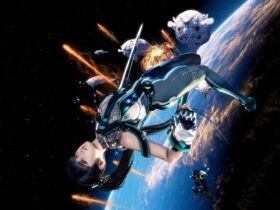
Leave a Reply
View Comments